Spotted beebalm: A native you need in your garden
Showstopper native is a pollinator magnet
Spotted beebalm (Monarda punctata) looks more like a plant belonging in some exotic locale rather than a native that is at home both in the hot sun of eastern United States as it is in the gardens and meadows of southern Canada stretching well up into northern Quebec and Ontario.
This native plant’s showiness, unique colour patterns and vigour makes it a perfect addition to any natural garden and a showstopper in even the most meticulous garden landscapes.
You could be excused for thinking this strange plant was a member of the orchid family. Its unique look, with several whorled flowers creeping up the stalk with small, tubular yellow florets painted with red spots surrounding pink-lavender leaf bracts that rise up the stalk in groups of three and more add a showiness that is truly a showstopper. The individual flowers are tubular, similar to the more traditional monarda flowers. They start off cream coloured but turn yellow with distinctive red and purple spots.
Spotted beebalm is a member of the mint family, grows two to three feet tall in optimum conditions and blooms in late summer to late fall. Its lovely minty fragrance fills the air around the plant especially if the leaves are bruised.
For those who enjoy using their plants for medicinal purposes, the leaves can used to make a natural herbal tea that is Said to cure all sorts of ills.
All that aside, it just looks cool with its flowers blooming right up the stalk rather than just at the end of the stalk like the more traditional beebalms.
Here you can see how the flowers grow up the stalks giving this beebalm a very different look than the others.
Spotted beebalm – also called horse mint – is unlikely to be a perennial performer in every garden but, once established, it can become a steady performer with little effort except regular reseeding. It can spread its own seed but a little judicial spreading by the gardener never hurts and should ensure a never-ending supply of this remarkable native plant in your garden
Although I did plant a spotted beebalm plug a few years ago, it never actually took so this is the first year I’ve had these in the garden.
From my research, it’s not unusual for the spotted bee balm to last only one or two years up to about four years in the garden. When it’s growing in a favourable location you can expect the plants to reseed often below or around the original plant or even in different parts of the garden.
A native plant for pollinators
In her incredibly informative and encyclopedic native garden book, A Garden for The Rusty-Patched Bumblebee, Creating Habitat for Native Pollinators, author Lorraine Johnson: writes: “Less frequently seen in gardens than the related Monarda didyma and Monarda fistulas, this plant should definitely be more popular. The flower clusters, in tiered whorls up the central stem, are very unusual – it’s not a stretch to compare them to the look of small pineapples. The overall effect of this Carolinian perennial is that it glows with a silvery sheen from the prominent silvery bracts.”
Lorraine recommends growing it with yellow wild indigo, flowering spurge and wild blue lupine.
For more on Johnson’s informative book on native plant gardening: A Garden for the Rusty-Patched Bumblebee , check out my earlier post here. Her earlier book, Grow Wild, is also worth exploring. click on this link for my post on Grow Wild.
Many gardeners will spread the seeds about the garden to ensure flowers return year after year. Others treat the plants more or less as annuals until they can get established in the garden.
The beauty of this outstanding native plant lends itself to a more creative approach to photography. For more on how I created this image and others featured in this article, scroll to the end of this post.
In our garden, I have planted four plugs which have all done well in this hot, dry summer. Some have certainly performed better than others. Our sandy, fast-draining soil is ideal for the plants, but I have found that they really prefer a lot of sun to perform at their best.
Locate them in a sunny spot with average to poor sandy or well-draining soil, do not overwater them and you are probably good to go.
Wildlife value in the garden
Being native to zones 3-9, the question will be asked: Are these plants beneficial to birds, bees and other insects in the garden?
It is actually a host plant for several moth caterpillars including the Gray Marvel Moth (Anterastria teratophora), Snout Moths (Pyrausta generosa, Pyrausta signatalis), Orange Mint Moth (Pyrausta orphisalis), and Hermit Sphinx Moth (Lintneria eremitus).
Spotted beebalm is also an important nectar source for various pollinators, such as butterflies, native bees, including bumble bees, wasps (large black and paper) and hummingbirds.
Like the other beebalms, it is resistant to both deer and rabbits. And, like other bee balms, they are susceptible to powdery mildew in the fall.
In my zone 6 the plants will start blooming in mid August and bloom for about three months through October and even into November. Later in the season they can provide an important source of nectar for migrating hummingbirds and butterflies.
Identifying the plants can be tricky in spring but look for lance-shaped, 3-inch by 1-inch leaves that are paired along the stalk and have serrated edges.
The root of the spotted beebalm is a short tap root surrounded by other fibrous roots, but unlike other bee balms, the spotted bee balm does not spread by rhizome making it a much better behaved member of the family.
They are very easy to grow from seed. Quick to germinate in spring in the garden or in a greenhouse. Simply sow the tiny seeds on the ground or in pots after last frost. You can spread them on the soil, press them in gently and put them in an area that gets morning sun and afternoon shade. Keep them lightly misted and germination should happen within two to three weeks.
It’s also easy to save seeds for next year’s gardening season. About three to four weeks after bloom, get a paper bag and carefully cut the stalk below the bloom. Careful you don’t turn the seed pod over or the small seeds will fall out. Dry the seeds in the paper bag. Seeds can be stored for about a year.
Because it is a short-lived perennial, you can usually expect your spotted beebalm to bloom in the first year.
More tips for growing the spotted beebalm
Over watering can cause powdery mildew and root rot.
One of only a few plants that can grow near black walnut trees.
The best way to get this plant is to plant it from seed, but it can be found in specialized native plant stores and on-line sellers. I purchased mine from Ontario Native Plants.
I have staked one of my plants just to keep it upright, while my other plants are growing naturally in a more meadow setting around other plants.
How I photographed spotted beebalm
Spotted beebalm is such an unusual plant that I wanted to photograph it using a variety of approaches, showing the plant in its natural environment as well as close-up images showing its detailed unique charcteristics from the tiny hairs on its tubular spotted flowers to the subtle beauty of its pinkish-lavender bracts.
Finally, its lovely flowers prompted me to get out the Lensbaby composer lens to take a more creative approach to documenting the plant.
In the first image: I used a combination of Lightroom and Luminar Neo post processing software to capture what may appear to be a simple close-up shot of a single flower/bract combination. The image is actually a composite of 3 images stacked together in Luminar Neo to substantially increase the zone of focus.
By focusing on three different areas of the flower from front to back, and combining them in Luminar Neo’s excellent stacking module, I was able to get most of the important parts of the entire flower in focus. This is a combination of only three images. If I wanted to have more of the flower in focus, I could have shot 10-20 images and merged them together, but I like to maintain some softness to keep the plant looking real rather than a more scientific rendering where the entire plant is in focus.
The second image: Here is a more straight forward approach to capturing the plant showing how the flowers rise up through the stalk. I needed to use a small aperture setting to capture both flowers in relative focus, so I used a feature in Lightroom to create a more blurred background to help the flowers better stand out from the background.
The final image: In this image I employed a number of tools to create a more softened ethereal look. First, I used a Lensbaby composer to create the original image. For those unaware of the Lensbaby line of lenses, they are designed to give the photographer control of the softness of an image to create ethereal, more romanticized and creative images that work particularly well with flowers.
Lensbaby lenses can be tricky to use because of their lack of sharpness and more experimental approach to photography. Using the manual focus soft-focus lens makes getting in-focus images difficult from viewing the back LED of modern digital cameras. However by adding a Hoodman photo accessory, which I have done, It is possible to get a magnified image of the back of the camera making focussing much easier. Quite frankly, I highly recommend the Hoodman for any photographer who uses the back LED on their cameras.
Once I was able to isolate the image that was sharp where it needed to be, I brought it into Photoshop where I added the soft veil of colour around the flower by picking out colours in the original image and then painting those colours into the photograph around the flower using a number of different brushes from a soft-bristle to a more textured style of paint brush.
Once satisfied with the image, it was imported back into Lightroom for final edits.
• If you are interested in exploring post processing further and are looking for a simple but highly powerful program to get you started, consider purchasing Luminar Neo. It is an outstanding post processing program that is capable of creating outstanding images. If you use my code “fernsfeathers” at checkout to get an additional 10 per cent off an already low price.
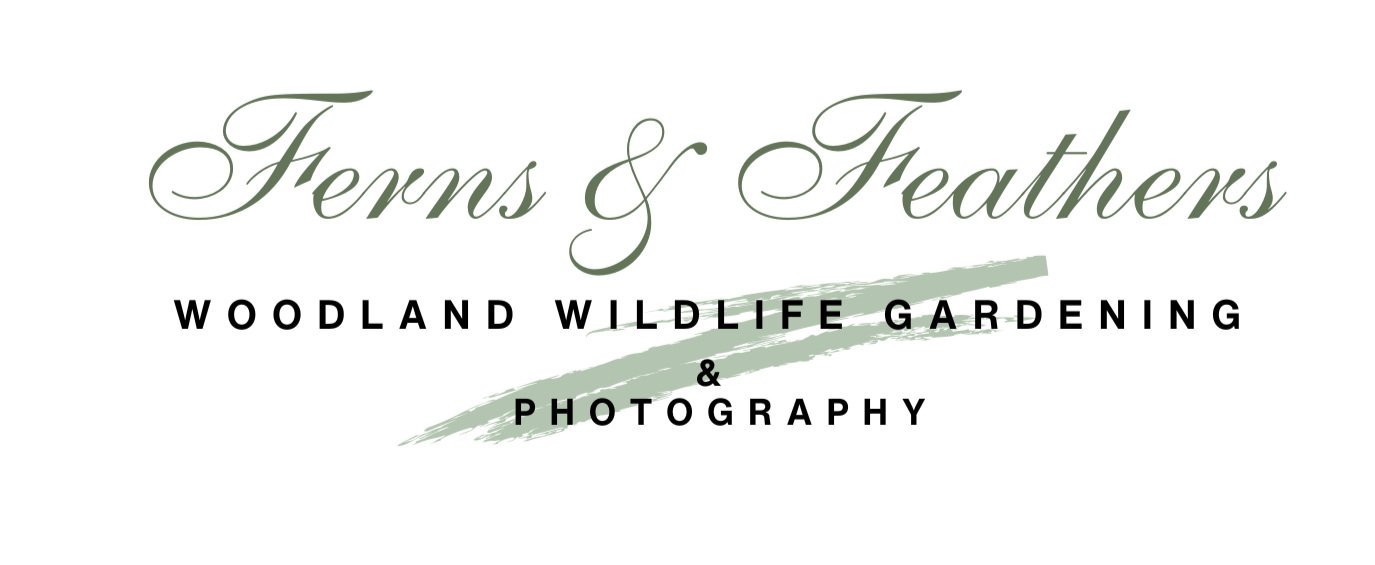
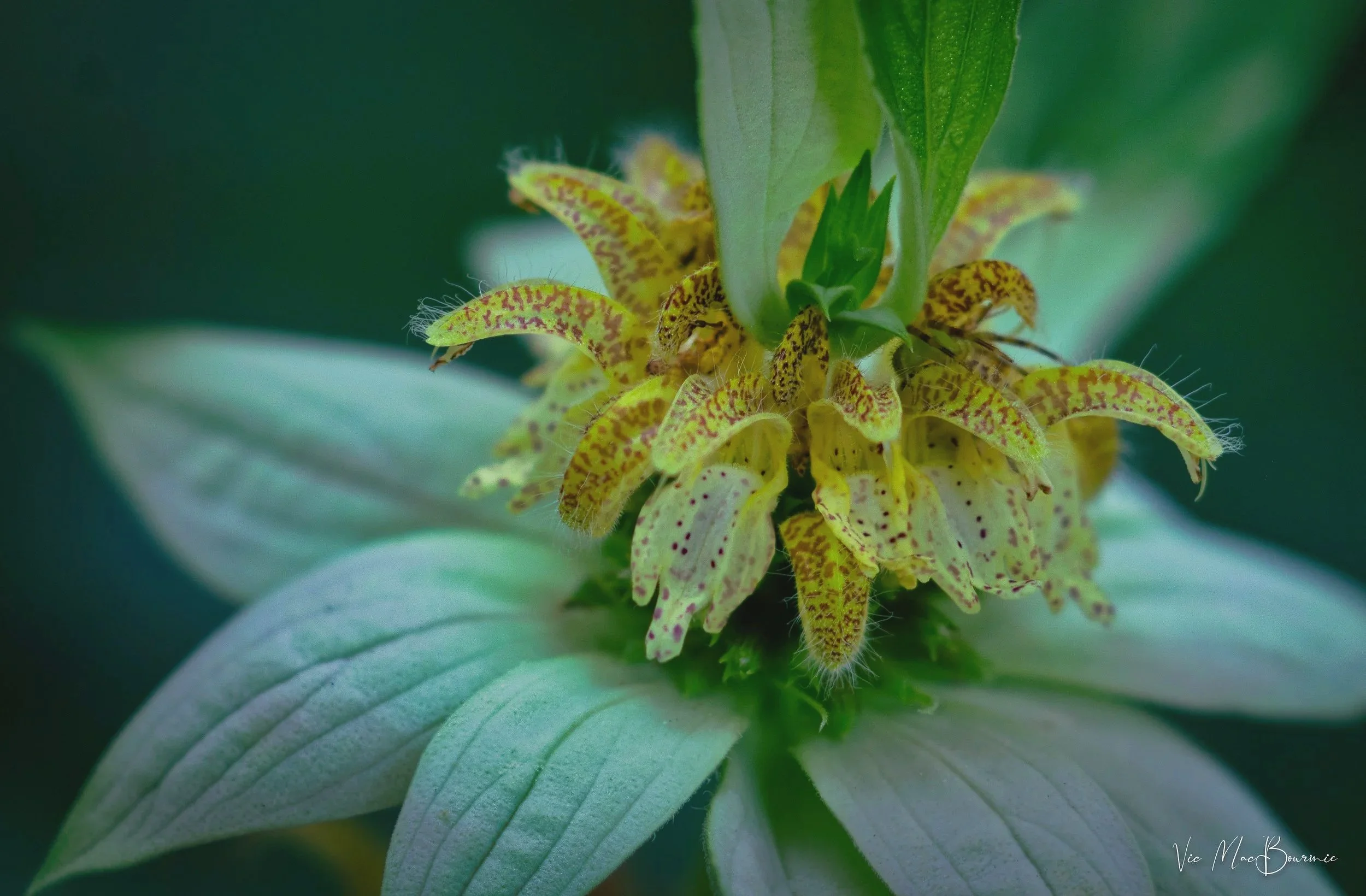
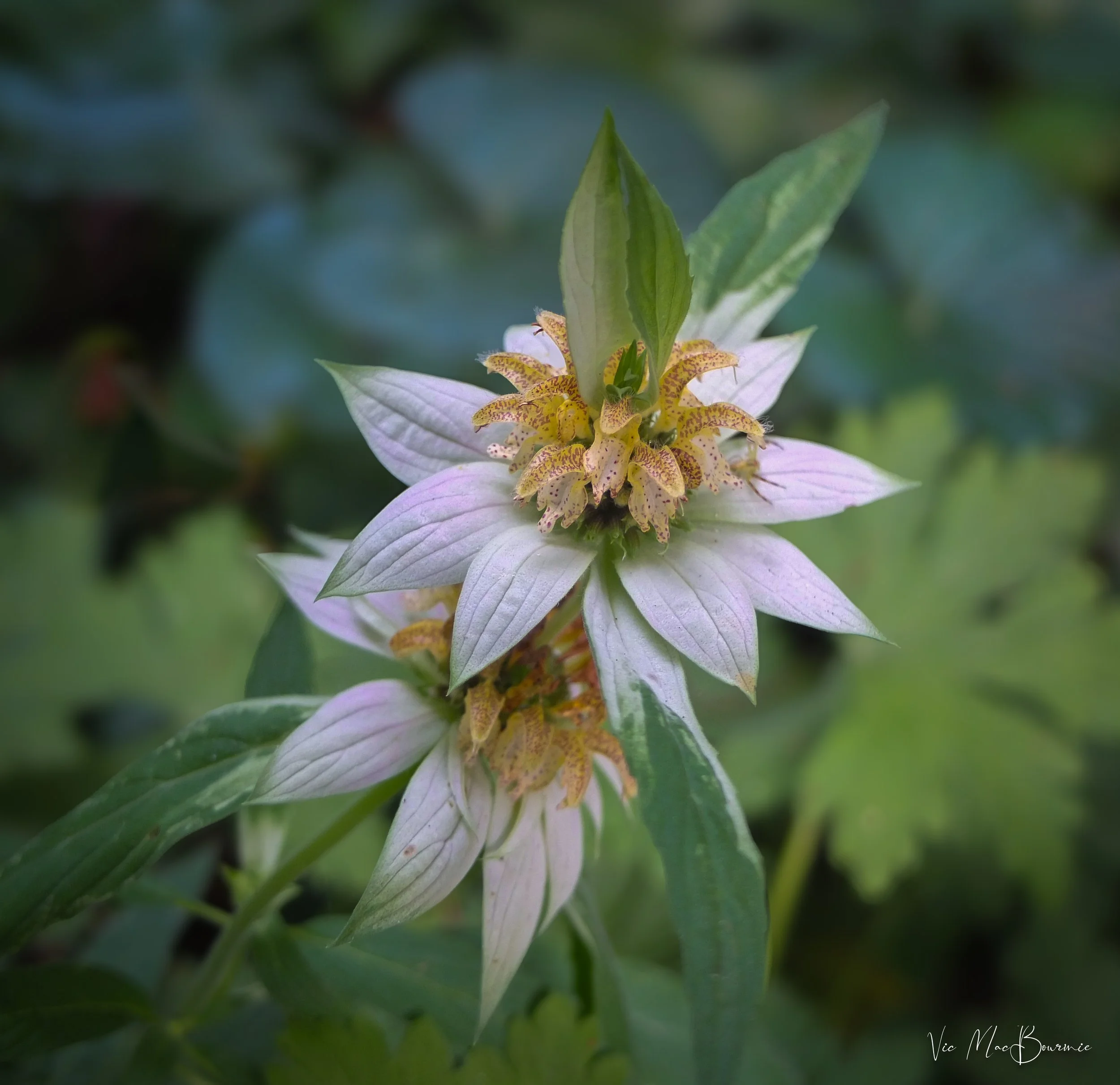








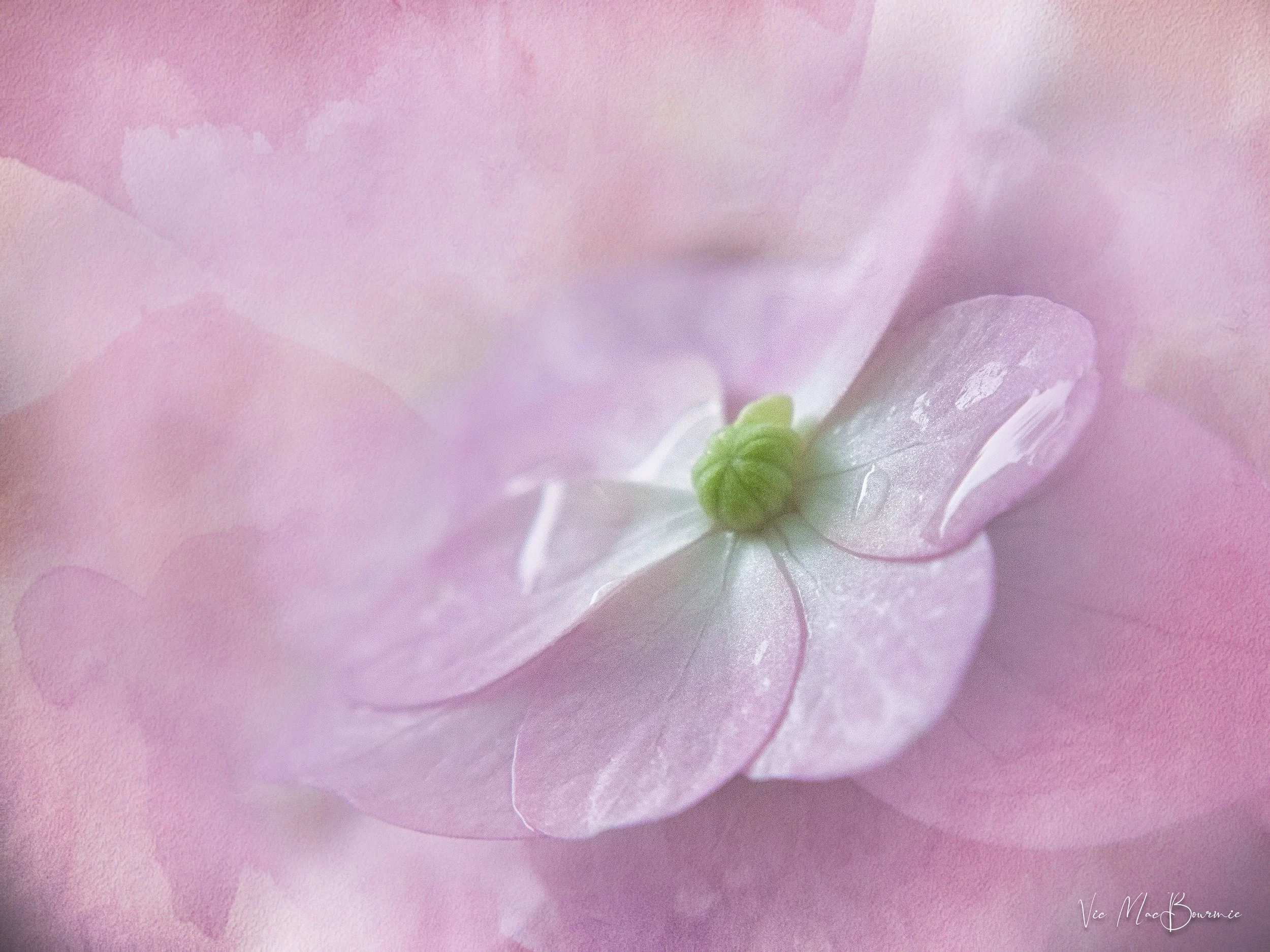




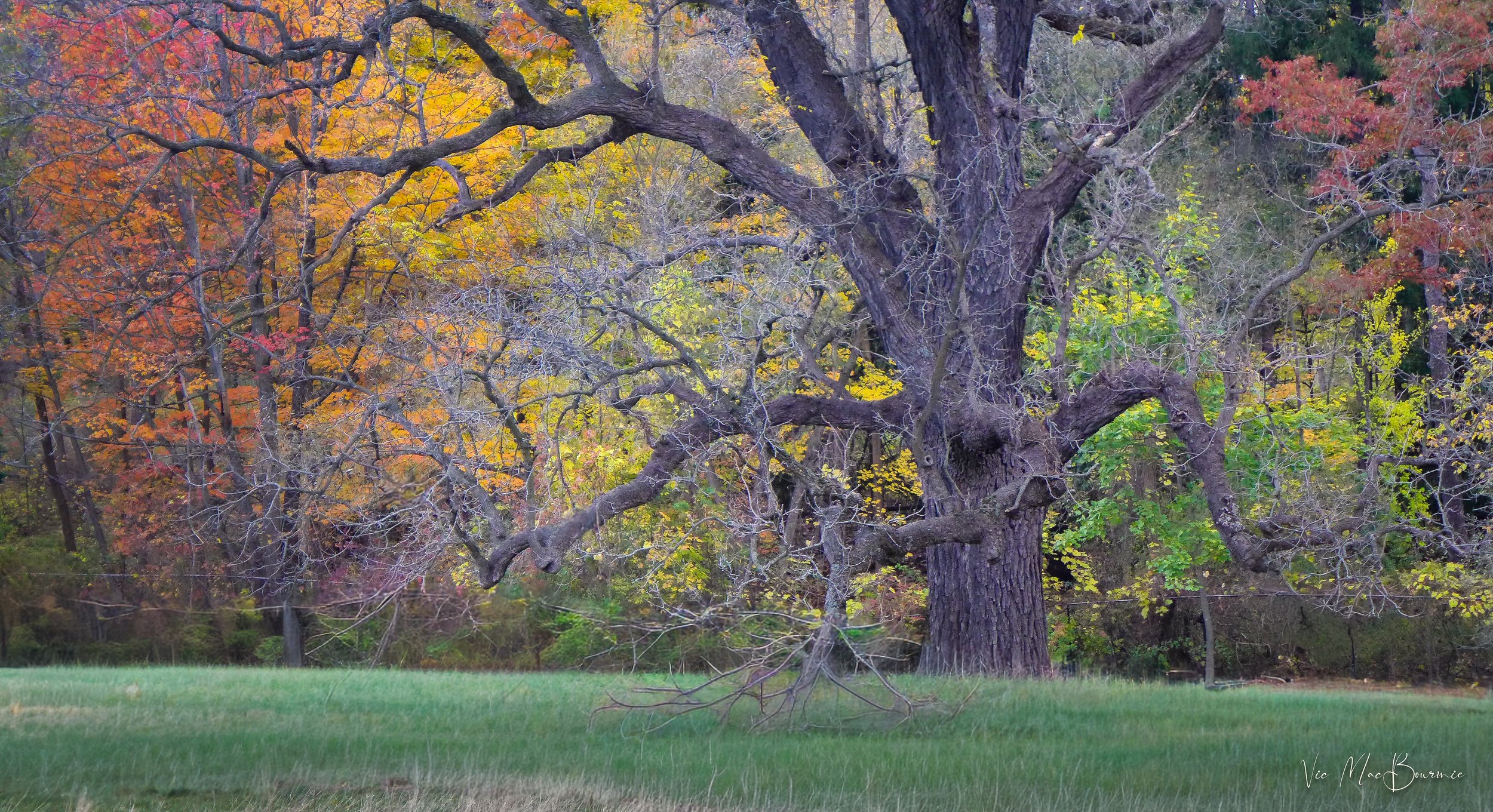



Forget-me-nots and other spring ground covers for the woodland garden